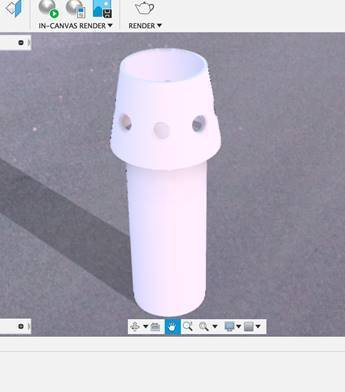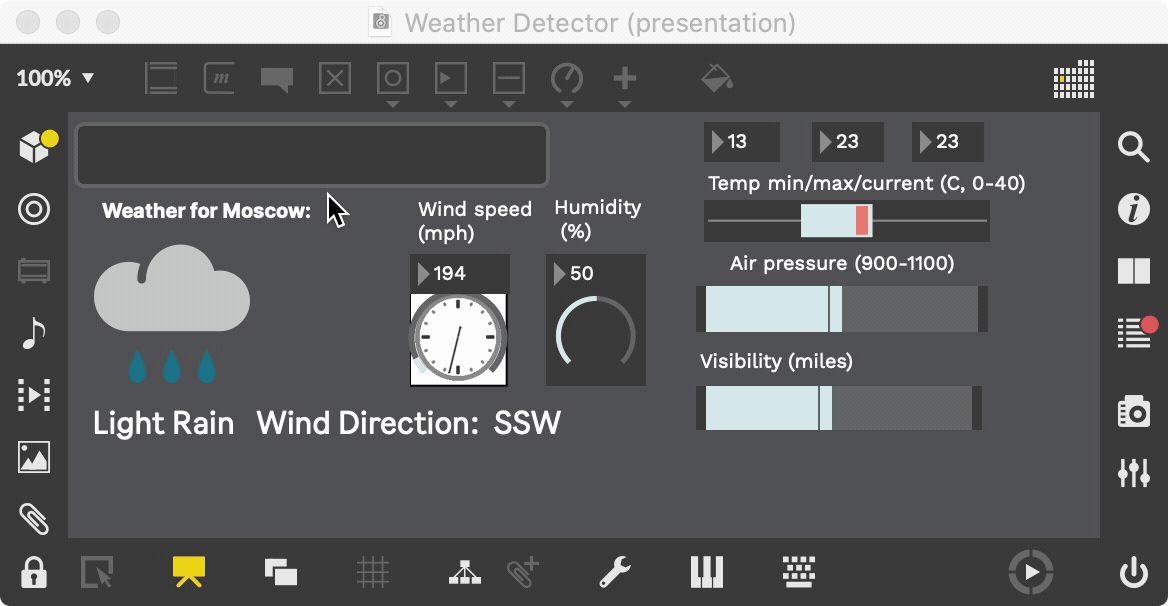MIF Remote Residency (2020)
As part of their initiative to support Greater Manchester artists during the Coronavirus lockdown period, Manchester International Festival opened a Remote Residency scheme, allowing artists to apply for funding to develop an idea during lockdown, with an emphasis on developing rather than a finished product.
My application was successful, and I used my Remote Residency time to develop my work on weather-responsive music. This builds on ideas I developed as part of MIF’s Creative Labs programme in 2019 with my piece Rain Box. This was a perspex cube with sensors inside it to detect when it was hit by rain. Each time a rain drop hit it, the box played a bell sound and a recording of a Manchester resident saying their own name.
You can find the BBC’s coverage of the Rain Box here..
I’ve been exploring ways to take this idea further during my remote residency. One strand of this is finding new ways to detect weather, and then use that weather data to control the parameters of music as it is generated in real time.
I’ve also added a way to pick where the weather data is taken from. A user of the software can type in any place around the world and immediately get the information from that place ready to use as data. I plan to release this as a Max For Live device so that any Ableton user can use weather data from around the world to control their music.
My application was successful, and I used my Remote Residency time to develop my work on weather-responsive music. This builds on ideas I developed as part of MIF’s Creative Labs programme in 2019 with my piece Rain Box. This was a perspex cube with sensors inside it to detect when it was hit by rain. Each time a rain drop hit it, the box played a bell sound and a recording of a Manchester resident saying their own name.
You can find the BBC’s coverage of the Rain Box here..
I’ve been exploring ways to take this idea further during my remote residency. One strand of this is finding new ways to detect weather, and then use that weather data to control the parameters of music as it is generated in real time.
One way I’ve done this is through adding capability for my software to read the weather forecast. This allows for a lot more options for having the music respond to the environment – e.g. the current wind speed could control the tempo of the music, the air pressure could control what selection of notes are played, and so on.
I’ve also added a way to pick where the weather data is taken from. A user of the software can type in any place around the world and immediately get the information from that place ready to use as data. I plan to release this as a Max For Live device so that any Ableton user can use weather data from around the world to control their music.
However, I don’t just want to use data collected from the internet as a source. It’s important to me that the data collected reflects a specific place that information is being physically gathered from, rather than a large general area like the whole of Manchester.
For this reason, in addition to a rain sensor, I’ve added a UV sensor to the electronics of the unit. This will allow for live sunlight readings from exactly where the unit is based.

In order to make the hardware easier to work with in real time, I’ve added LCD displays to the electronics to show weather data directly as part of the unit.
I’ve also been building a synthesiser that draws weather data from all these different sources and uses it to compose music in real time – you can hear some of this in the videos above!
Finally, I’ve been working on developing the overall appearance of the project as it stands in the real world. My mum was giving away a planter which I thought would be perfect to house the electronics. I’m going to put a perspex sheet over the top and use that as a surface for measuring raindrops, and put the UV sensor either under the perspex (I’ve not checked whether perspex blocks UV yet) or through one of the holes in the side. I’ll probably need to find a way to keep bugs out.
I haven’t been able to pick up the planter yet due to lockdown, so I got my sister to take some measurements and 3D modelled the planter so that I can work on the design without having the unit physically present.



There’s still a lot I want to develop, but the remote residency has allowed me the time and breathing space to explore lots of the ideas the original Rain Box left open. My future plans are to assemble all these pieces into one unit, and present it as a longform audio piece that responds to the specific location it’s in. I’d also be interested in working to develop the connection of the piece to the immediate environment it’s in, and the ways weather relates to local people and stories.
Big thanks to MIF for having me!
Supported by Manchester International Festival #MIFCreatives2020
